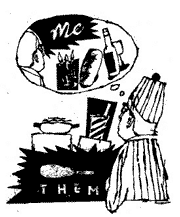So you wanna open a restaurant. You envision tables packed with friendly faces, people who will become your regulars. You dream of wine being sipped and conversations flowing as servers dance about the room. It’ll be your menu, your food. You’ll choose the paint on the walls, the tile on the floor, the linens, the flowers, the music, even the votive candles. You’ve got Party of Five-itis.
Here’s the tough-love part: The odds are against you. You’ll likely be broke for at least a year, and that’s if you get lucky. Unless . . .
Despite what you’ve been told, there is a method to the madness that is opening and running a successful restaurant. Sure, there are always the exceptions to the rules: The Rover’s and Herbfarms of the world, where moneyed diners are knocking down the doors to spend $100-plus per person. But for the average Joe, what are the secrets? Thought you’d never ask. Following are five key ways to open a restaurant with staying power. It’s not foolproof, but it’ll get you started.
5. Belltown, shmelltown. OK, the location-location-location thing has its merits. Opening a restaurant in Belltown might be a sure thing, if you can keep the place full. But rents are high, making the idea of opening a midpriced restaurant with a cozy, stay-awhile feel not only unrealistic, but bad business. First-time restaurateurs should take a chance on a burgeoning neighborhood. When La Medusa opened in Columbia City, some called the owners crazy. But now, just four years later, the neighborhood has blossomed into a thriving area with a varied culinary repertoire. Same goes for the Kingfish Caf麠Years after opening, it still has a line at the door at 10 minutes till 6 p.m. every night, even though there’s no foot traffic. The moral: A neighborhood restaurant can become a destination. My prediction: South Park will be a good place to have a restaurant in a few years. Go ahead: Call me crazy.
4. Alcohol is your friend. Have a bar. Please don’t even think about not having one: It’s where you’ll make your money. Some restaurants make 70 percent of net profits there. Cocktails are your best bet, because people don’t comparison shop for them the same way they do with wine. Got a bottle of Merlot on the menu for double its retail price? Customers may groan. But put a cocktail on the menu for seven to 10 times the cost of ingredients and no one will say a word. They may even order a second.
3. Know your niche and have a chef with a local pedigree. First: your niche. Choose what you want to do, whether it’s a deli or a doughnut shop, and stick to it. Caf頌ago, a neighborhood spot with traditional Italian fare, is a great example. They aren’t breaking new ground, but they’re doing what they do very well. You won’t see seared ahi tuna on their menu just because it’s everywhere else; instead, diners know that when they’re jonesing for that swoony lasagna, it’ll be there. Remember when the Deluxe changed its menu and quit serving burgers? (They’re back, no doubt due to clamoring customers.) You get the picture. Second: It can only help if your chef has a recognizable name or comes from a popular restaurant. And it’s almost required that his/her last job was local. Why? Seattle diners like to name-drop. If my mom knows where the chef at Supreme cooked before opening his restaurant (the answer? Etta’s), I’m pretty sure these things matter. Any of the respected restaurants around town (e.g., Dahlia Lounge, Campagne) make quality culinary finishing schools and can potentially create buzz- worthy openings.
2. Don’t be a church or a library. I know of a restaurant downtown that will surely close this year, despite serving some truly beautiful, harmonious dishes. But it’s just so damned sacred. A clang of the fork actually draws the eye, and it’s like pulling teeth to get the servers to loosen up. I remember thinking while dining with my sister one night, “Am I supposed to whisper?” Seattle diners want to have a good time. That’s not to say we don’t appreciate good food, because many of us truly do. And it’s not to say we don’t enjoy trying something new (well, we do need to work on that one). But once a restaurant becomes too precious, when it’s an uncomfortable place to spend time, it’s over. Without the right amount of ease, comfort, and a touch of humor or wit now and again, it’s easy to feel trapped.
1. Service is everything. Take service as seriously, if not more, than you do the food, because your diners do. So be hospitable, but don’t pour it on too thick. When an owner or a chef knows our name, we feel special and that’s what makes us regulars. But when a waitress tries to participate in our conversation? Yikes. On the other hand, it may seem smart to hire a black-clad hipster to be the host if that’s your restaurant’s image, but make sure Mr. or Miz Cool is a friendly one. Being exclusive only works for a few, and intimidating a potential diner is suicide. In other cities, servers might be able to judge the net worth of a diner by his or her shoes, but in Seattle, money is just as likely to be sporting Adidas.
Go for it. It’s a better time than ever to be in restaurants in Seattle. People are talking about food, and they’re slowly branching out. Keep dreaming that little dream; do it the right way and it’s as simple as pie.





